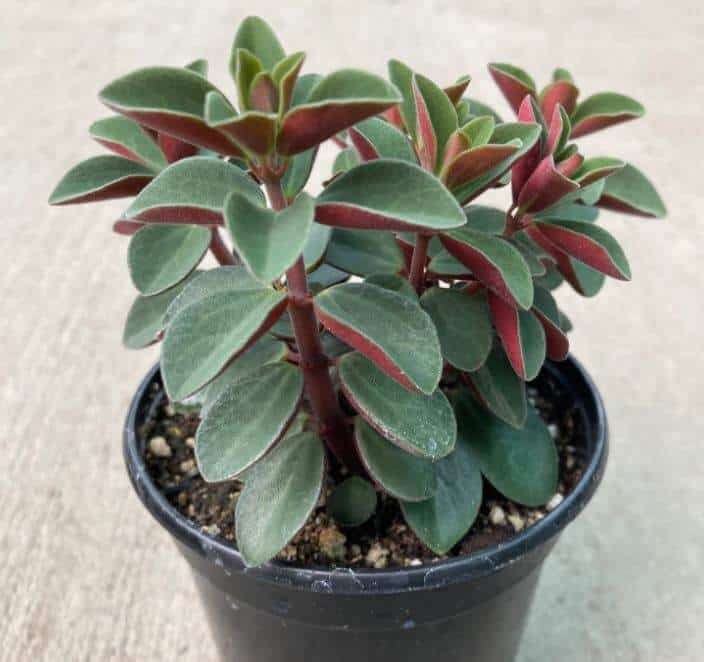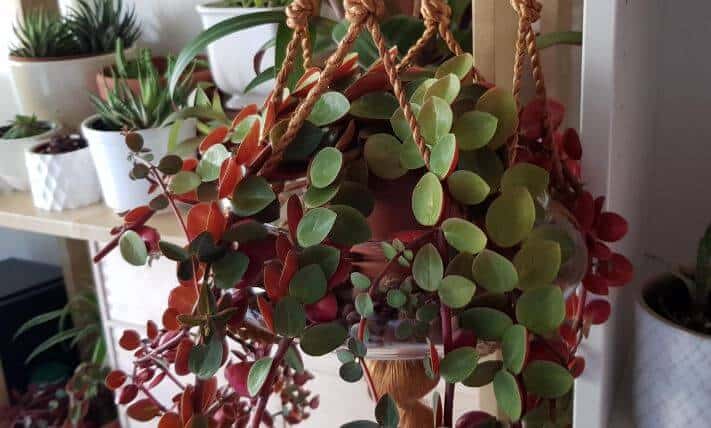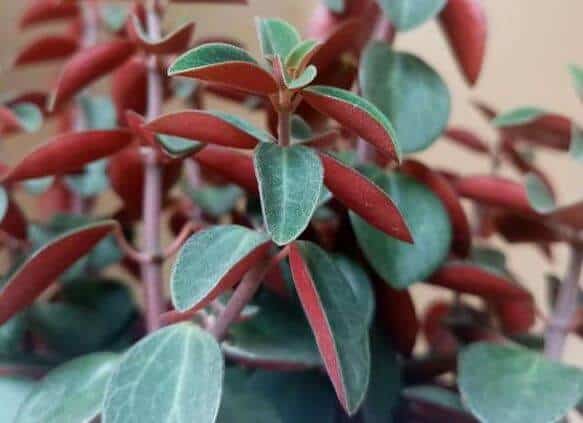Last Updated on January 6, 2023 by a Friendly Gardener
The Red Log plant belongs to the Peperomia family, and it gets its name from the fact that it has green and deep red leaves. This is a vibrant plant that is scientifically called Peperomia verticillata and is known for its vibrance.
These deep colors are the reason this plant is coveted because it’s a great choice for those who want an indoor plant that matches the decor of the room it is in.
Red Log Plant Care

The Red Log plant care guide is actually a quick read because, along with being a Peperomia, this is a succulent, which is an easy category of plants to care for. It’s a tropical plant and its leaves are considered ornamental and not flowers, as is typically the case with decorative plants.
It’s also a variegated plant which means you can propagate it easily and all the plants might just end up looking different from one another. Here are the specifics of caring for the Red Log plant.
Light
This plant likes lots of sun, which means you should keep it near a west- or south-facing window. Make sure you place the pot not more than three feet from the window so that it has the best spot for maximum growth.
If the plant doesn’t get enough light, it will start dropping leaves and that’s how you know you need to change its location. Direct light isn’t a problem for this plant, but if the sunlight is too strong, the leaves will look scorched.
You might have to do some trial and error if this is your first plant of its kind.
Water
This plant also doesn’t need too much water, but you should give it about 0.8 of a cup of water once every nine days. Make sure the soil is dry before you water again. This plant doesn’t respond well to overwatering.
So, you must make sure that the roots are never sitting in still water because they will rot. You should also make sure that the water reaches all the soil uniformly. So, make sure you plant it in a well-draining pot.
If you’re not sure about the dryness of the soil underneath, you can use a moisture meter to be on the safer side.
Soil

This plant grows to its potential when it is in well-draining soil. You should also check the level of organic matter in the soil because that’s a good addition. Coco coir, vermiculite, and perlite are all good options since they help drainage.
You can also get a regular potting mix and add just a bit of perlite to get the job done.
Temperature and Humidity
This is a tropical plant which means its ideal growing temperature is around 68 degrees F. These plants are also often called radiator plants because while they can handle the heat, they are not meant to be kept on an actual radiator.
Doing so will make the soil dry and also make the air dry. These plants don’t need a lot of humidity, but a complete lack of it is not good for their growth. It also means that you should make sure there is no draft near this plant.
If the plant is in a very dry place, you should see if you can mist the plant. These plants usually get their moisture through roots, which means they will get enough if you water them the right way.
Fertilizing
Adding some fertilizer when it is growing is a good move. You can do it once every two to four weeks to help the plant get the nutrients it requires and grow. But you should stop it in the winter when the plant is dormant.
Sometimes, your potting mix will have all the nutrients the plant needs. And you don’t have to add any fertilizer because, by the time the plant uses all the nutrition from the soil, it’s time to repot the plant.
Repotting

Speaking of repotting, you will need to do that once a year or by the time this plant is twice its original size, whichever happens first. You should do this in the growing season and get the next size pot to facilitate the growing roots.
This time too, you should get well-draining soil that is rich and make sure the pot has drainage holes so that the plant doesn’t become soggy when you water it.
Pests and Diseases
Along with root rot, these plants are often at risk of leaf spot disease. As the name indicates, the second problem is fairly visual, so it’s not hard to glean that there’s a problem. You should isolate the plant that has the problem and change its watering needs.
When it comes to pest control, these plants are often attacked by mealybugs, spider mites, and whiteflies. When you see an infestation, you should isolate the plant and clean it well with a damp cloth. If the problem is severe, you might have to use an insecticide soap.
Propagation

These plants can easily be propagated using cuttings. For that, you should get a clean pair of scissors and collect one or more leaf cuttings along with a stem. You can place them in the soil or water till you see the roots grow out.
If you’re growing the roots in water, you should let them come out and then place them in a pot.
The Bottom Line

It should be clear to you that caring for the Red Log is quite easy. They need a good deal of sun, but it shouldn’t be scalding hot, and make sure you don’t overwater it. This plant is also quite easy to care for and it never gets too big for its surroundings, which makes it a great pick for a plant on a nightstand or an office decoration.

